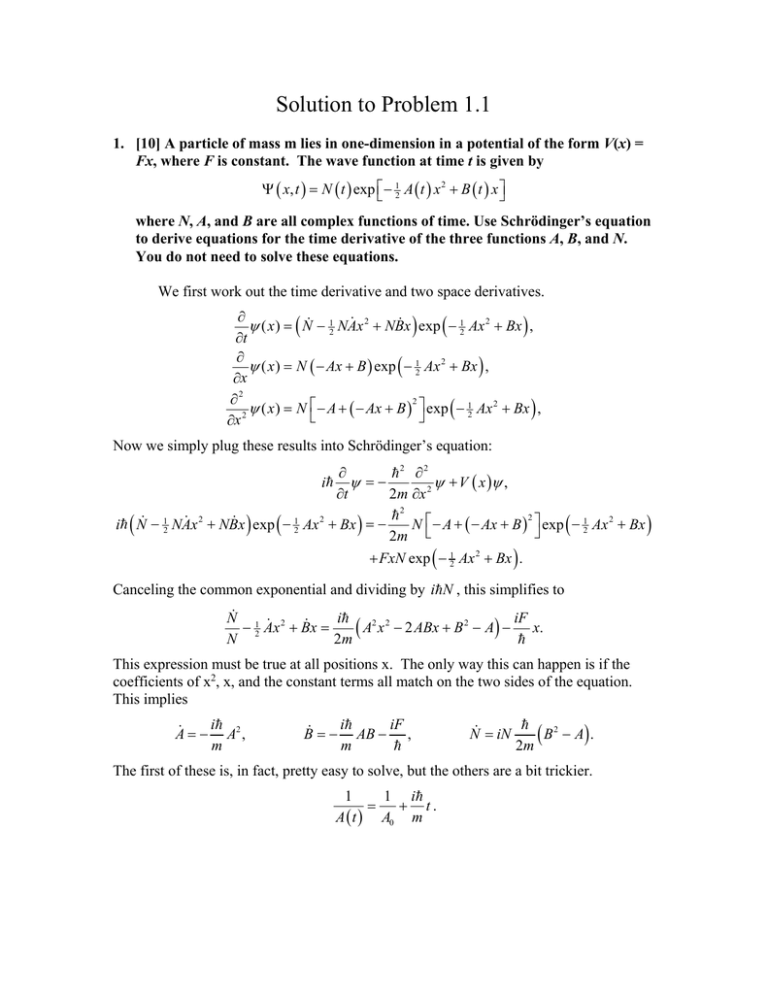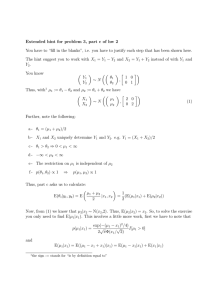Solution to Problem 1.1
advertisement

Solution to Problem 1.1 1. [10] A particle of mass m lies in one-dimension in a potential of the form V(x) = Fx, where F is constant. The wave function at time t is given by x, t N t exp 12 A t x 2 B t x where N, A, and B are all complex functions of time. Use Schrödinger’s equation to derive equations for the time derivative of the three functions A, B, and N. You do not need to solve these equations. We first work out the time derivative and two space derivatives. 2 NBx exp 1 Ax 2 Bx , ( x ) N 12 NAx 2 t ( x ) N Ax B exp 12 Ax 2 Bx , x 2 2 ( x ) N A Ax B exp 12 Ax 2 Bx , 2 x Now we simply plug these results into Schrödinger’s equation: 2 2 i V x , t 2m x 2 2 2 NBx exp 1 Ax 2 Bx N A Ax B 2 exp 1 Ax 2 Bx i N 12 NAx 2 2 2m FxN exp 12 Ax 2 Bx . Canceling the common exponential and dividing by iN , this simplifies to N 1 2 i iF 2 Ax Bx A2 x 2 2 ABx B 2 A x. N 2m This expression must be true at all positions x. The only way this can happen is if the coefficients of x2, x, and the constant terms all match on the two sides of the equation. This implies i A A2 , m i iF B AB , m N iN B 2 A . 2m The first of these is, in fact, pretty easy to solve, but the others are a bit trickier. 1 1 i t. A t A0 m






